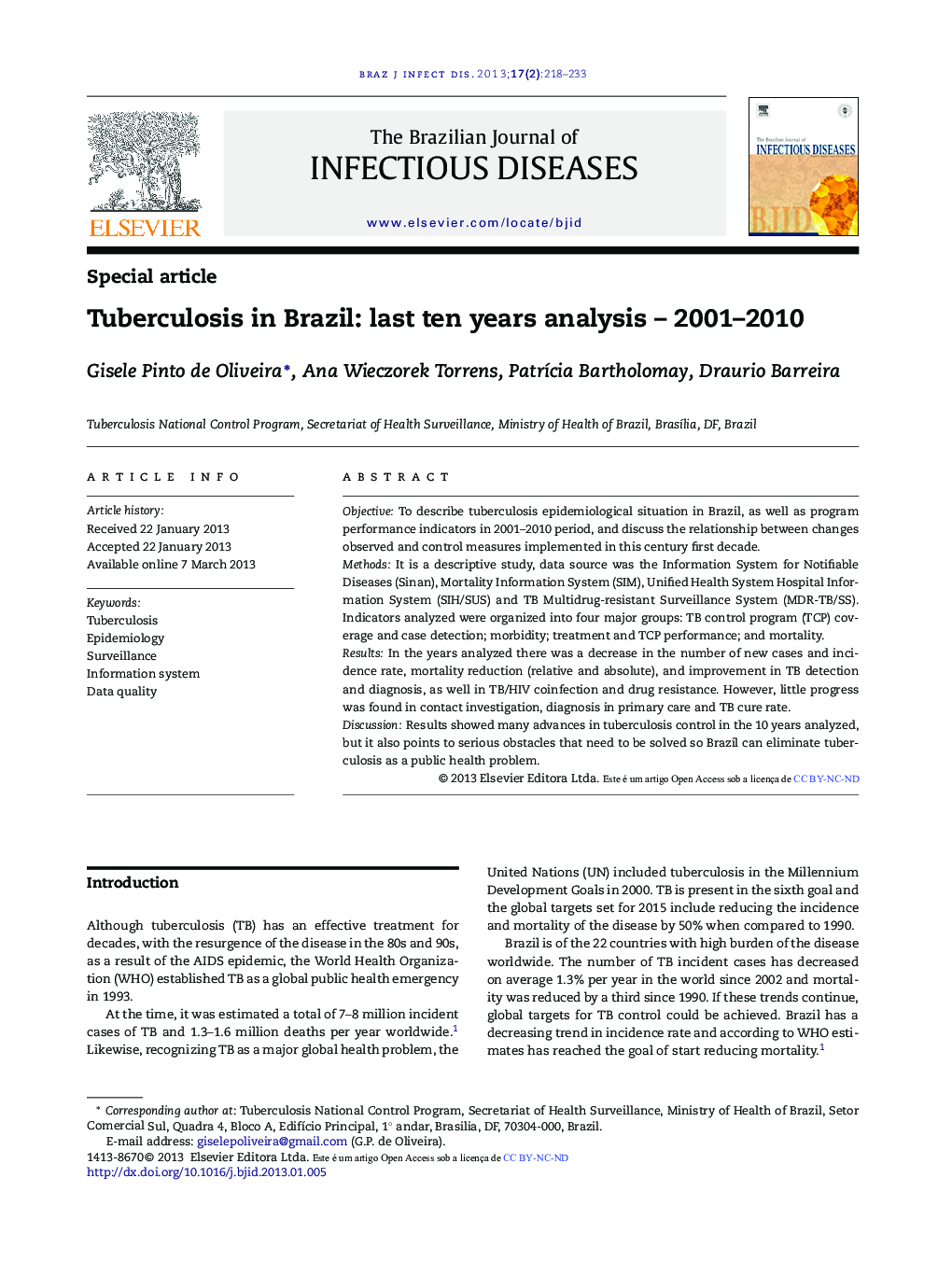| Article ID | Journal | Published Year | Pages | File Type |
|---|---|---|---|---|
| 3344078 | The Brazilian Journal of Infectious Diseases | 2013 | 16 Pages |
ObjectiveTo describe tuberculosis epidemiological situation in Brazil, as well as program performance indicators in 2001–2010 period, and discuss the relationship between changes observed and control measures implemented in this century first decade.MethodsIt is a descriptive study, data source was the Information System for Notifiable Diseases (Sinan), Mortality Information System (SIM), Unified Health System Hospital Information System (SIH/SUS) and TB Multidrug-resistant Surveillance System (MDR-TB/SS). Indicators analyzed were organized into four major groups: TB control program (TCP) coverage and case detection; morbidity; treatment and TCP performance; and mortality.ResultsIn the years analyzed there was a decrease in the number of new cases and incidence rate, mortality reduction (relative and absolute), and improvement in TB detection and diagnosis, as well in TB/HIV coinfection and drug resistance. However, little progress was found in contact investigation, diagnosis in primary care and TB cure rate.DiscussionResults showed many advances in tuberculosis control in the 10 years analyzed, but it also points to serious obstacles that need to be solved so Brazil can eliminate tuberculosis as a public health problem.
